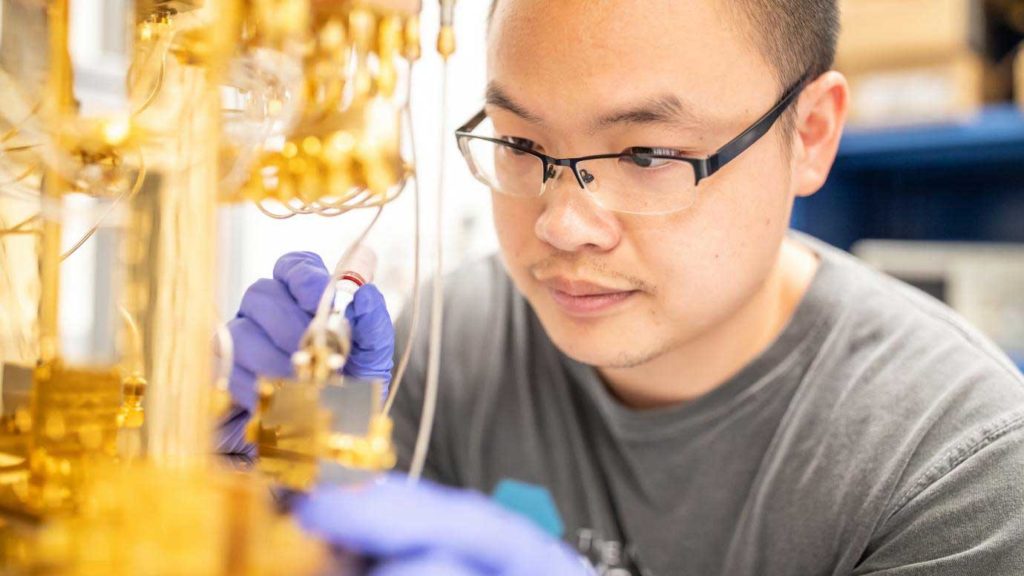A recent study has taken a new step forward towards making quantum computing more feasible. In a breakthrough, scientists from the University of Chicago have sent entangled qubit states through a communication cable. The cable links one quantum network node to a second node.
What’s more, using the same cable, scientists amplified an entangled state to entangle two qubits in each of two nodes. The entangled qubits then entangle with other qubits in the nodes.
Prof. Andrew Cleland, who led the research, said, “Developing methods that allow us to transfer entangled states will be essential to scaling quantum computing.”
For this study, scientists used superconducting qubits, tiny cryogenic circuits that can be manipulated electrically. The cable they used was a one-meter-long superconducting cable.
Scientists then created an experimental set-up with three superconducting qubits in each of two nodes.
They connected one qubit in each node to the cable and then sent quantum states, in the form of microwave photons, through the cable with minimal information loss. The fragile nature of quantum states makes this process quite challenging.

Scientists also developed a system through which they could make the entire transfer process- node to cable to node- short. The process takes only a few tens of nanoseconds (a nanosecond is one-billionth of a second). That allowed them to send entangled quantum states with very little information loss.
Using the system, scientists were also able to amplify the entanglement of qubits. Scientists used one qubit in each node and entangled them together by essentially sending a half-photon through the cable. They then extended this entanglement to the other qubits in each node. When they were finished, all six qubits in two nodes were entangled in a single globally entangled state.
In the future, scientists hope to extend their system to three nodes next to build a three-way entanglement.
Cleland said, “We want to show that superconducting qubits have a viable role going forward.”
Journal Reference:
- Youpeng Zhong et al. Deterministic multi-qubit entanglement in a quantum network, Nature (2021). DOI: 10.1038/s41586-021-03288-7
